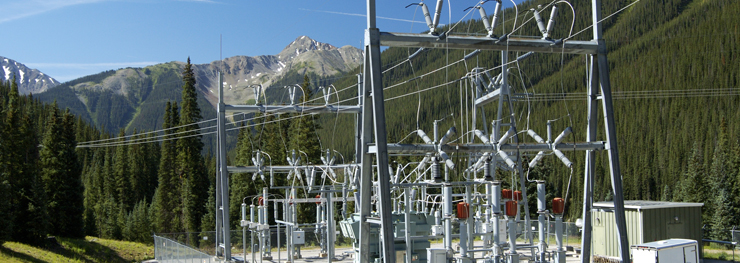
Your Network's Edge®
Blog Post
You are here
How to Secure SCADA Substation Automation
Power Utilities are always looking for ways to be more efficient and improve workflows. As our world becomes more digitized, it only makes sense that power industries follow suit.
Power systems are constantly evolving, as we can witness from the growing number of electric cars on the road. These systems use Supervisory Control and Data Acquisition systems (SCADA) to monitor and control heavy usage.
How Does SCADA Play a Role
SCADA offers organizations real-time data for informed decision-making. This is a vital need for the energy sector, where operational network operations require real-time control over critical infrastructure, processes, and equipment. In substation automation, SCADA systems play a crucial role. They minimize the chance of human errors and enable operators to remotely monitor and control protection relays, circuit breakers, voltage regulators, and other substation equipment. SCADA provides functions including fault detection, alarm management, automated switching to enhance system reliability, and reduced outage durations.
New Distributed Energy Resources (DERs) are increasingly being introduced into the power grid to ensure higher safety and security. DERs are wind farms, solar farms, hydroelectrical dams, and bio-mass generators. Also, SCADA and new-generation Industrial IoT sensors (IIoT) collect data and monitor changes in these DERs, to ensure their proper operation and integration with the grid.
SCADA systems employ communication infrastructure such as wired or wireless networks to establish connectifons between the control center and remote field devices, ensuring data exchange in real-time. IEC 104, MODBUS, and DNP3 are communication protocols commonly used in the field of power systems automation and control.
As power grids become more interconnected and reliant on digital communication systems, ensuring cybersecurity becomes critical. Power utilities need robust utilities communication solutions - networks with built-in security features to protect against cyber threats and unauthorized access. This includes encryption mechanisms, authentication protocols, intrusion detection systems, and secure remote access mechanisms.
How RAD Secures SCADA Communications
RAD’s technology provides encrypted end-to-end SCADA communications over fiber and cellular infrastructure. Therefore, the SecFlow IIoT gateway is deployed in each substation to enable communication to the central SCADA and IIoT servers through a secure and protected operational wide area network (OWAN). OWANs have historically been based on SONET, SDH, and nowadays, MPLS technologies. SCADA and IIoT traffic originating from substations is securely encrypted and routed through dedicated security gateways at central monitoring and control sites, before being directed to SCADA and Industrial IoT servers and controllers.
To enhance system resiliency, redundancy is introduced by deploying duplicate SecFlow units in each substation and implementing two security gateways at every SCADA central site. Furthermore, heightened reliability can be achieved through dual cellular modems. (See also: LoRaWAN IoT Gateway Devices)
Security
As security becomes a top priority, the SecFlow features a built-in firewall and supports security protocols such as 802.1x for protection against unauthorized access. Moreover, its hosted Docker container technology accommodates dedicated OT (operational technology) security applications, ensuring comprehensive security monitoring.
For an added layer of communication security, each SecFlow unit is configured with two IPsec tunnels to navigate both the fixed Operational WAN and the cellular link. These tunnels terminate on separate security gateways, situated at distinct SCADA central locations. They guarantee secure uninterrupted communication even in the event of a failure in the fixed network.
Operating on a secure Linux-based system, the SecFlow and its associated security gateways run services and applications with minimal access privileges. Additionally, the built-in firewall can be configured to block specific IP and MAC addresses or restrict communication to designated protocols such as IEC 104, MODBUS, or DNP3.
Edge Computing
Incorporating edge computing capabilities, the SecFlow features Docker containers that host third-party security applications, such as Rhebo’s OT anomaly detection. It performs threat detection and network monitoring specifically designed for industrial control networks. In addition, it records and analyzes data traffic to automatically detect and report any anomalies.
End-to-end management
The SecFlow is managed by RADview, which includes a network element manager, an end-to-end service manager for IPsec and L2 tunnel services, network performance monitoring, and fault management. RADview provides an intuitive graphic representation of network clouds, links, nodes, end-to-end services, and network status indication. It also provides zero-touch functionality with auto-discovery capabilities, if needed. Fully ITU-T FCAPS (fault, configuration, accounting, performance, and security) compliant, RADview offers security management supporting user access profiles.
LTE and Private 5G Technology
LTE and 5G cellular technologies are utilized as backup links in case of a failure of the optical OWAN. They can also be used as primary links for new or remote sites not reached by fiber infrastructure. Such technologies, including Private LTE/5G networks and/or secure virtual LTE/5G circuits leased from communications service providers (CSPs), are gradually being introduced into this conservative ecosystem.
Final Thoughts
SCADA systems are pivotal in ensuring secure and reliable monitoring and control of power systems. They provide real-time data, reduce human error, and play a crucial role in substation automation, allowing remote monitoring and control of equipment. Their features, such as fault detection and automated switching, enhance system reliability. With the integration of DERs and the need for robust cybersecurity, there’s an increased need for technologies that offer encrypted end-to-end communication and redundancy, which is exactly what RAD’s solution for secure SCADA communications does. With LTE and Private 5G further ensuring robust communication, and as power grids become more interconnected and reliant on digital systems, SCADA's and IIoT's role in power industries will continue to be indispensable for efficient and secure operations.
For more details on how RAD provides end-to-end SCADA communications provides over fiber and cellular, with resiliency, security, and edge computing, all managed seamlessly from end to end. Download the application brief here.

